
Trying the NY Times technique
So I set out today to try the new technique that we've been discussing from the New York Times article. I created a dough like what he described the night before and gave it an 18 hour rise.
This morning, I dusted off a Le Creuset pot I got as a gift a few years ago but have rarely used.
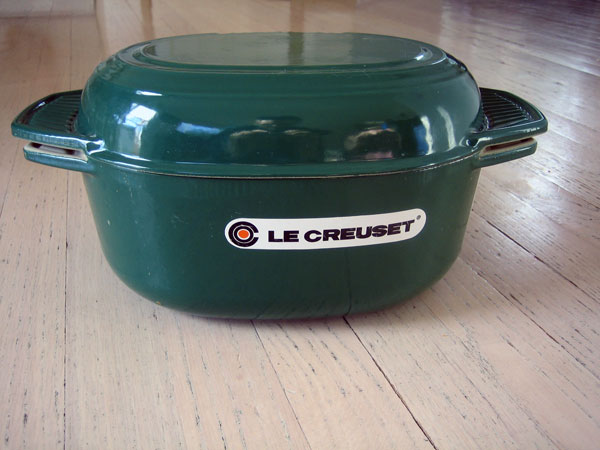
18 hours later, the dough was extremely bubbly. Personally, I thought it smelled a little overfermented. Slightly alcoholic.
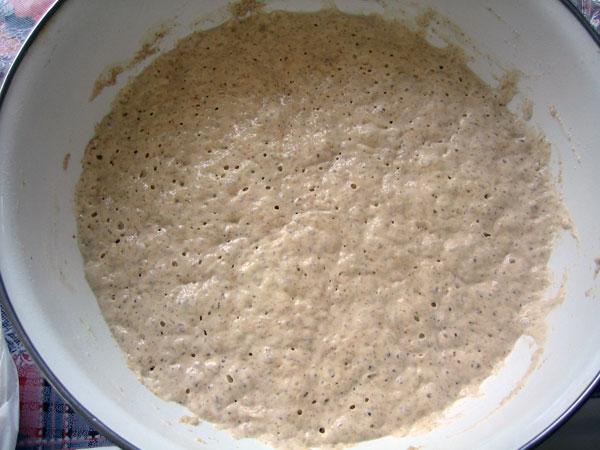
Around 80% hydration, folding it was a pain.
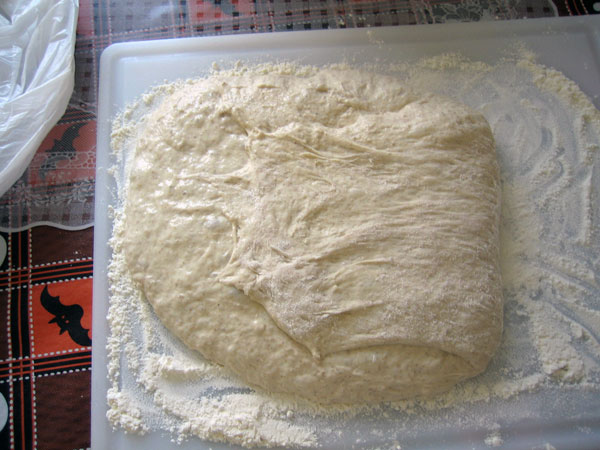
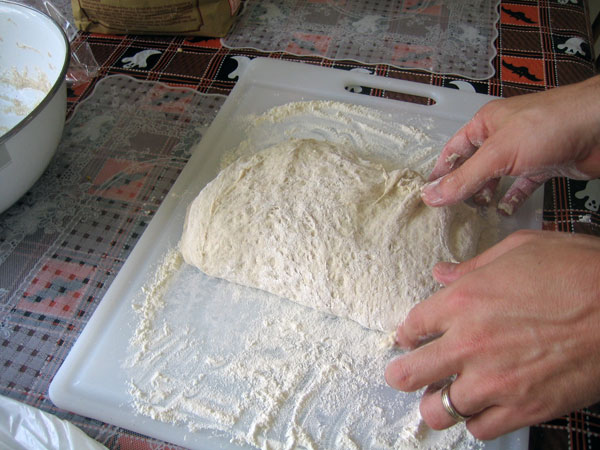
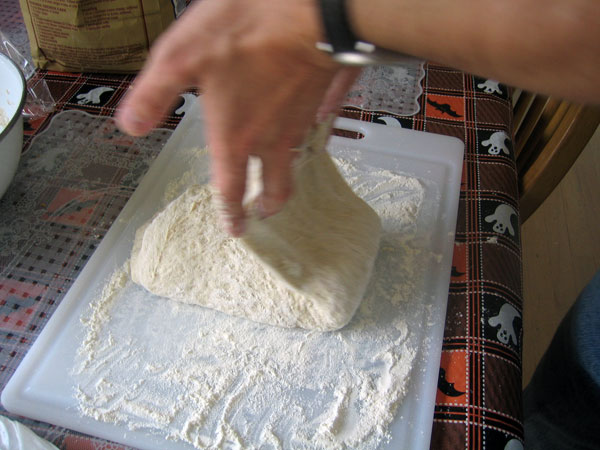
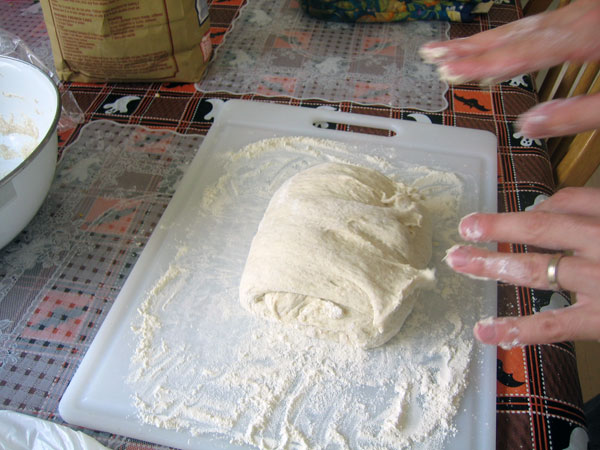
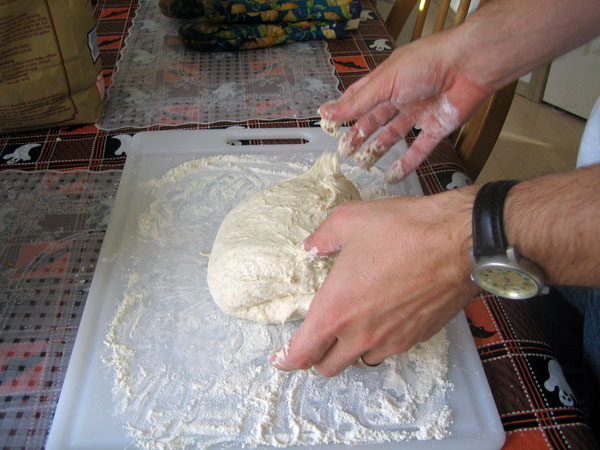
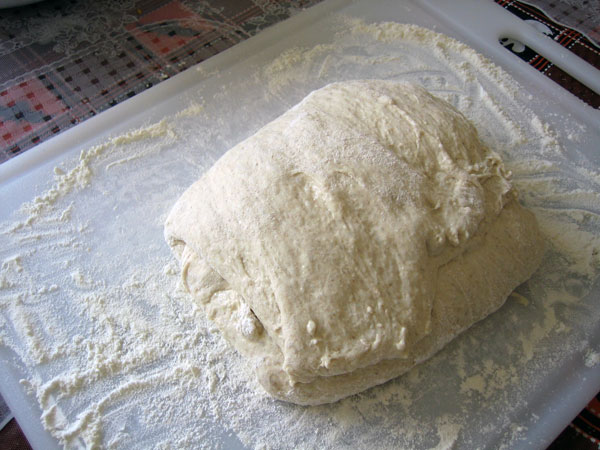
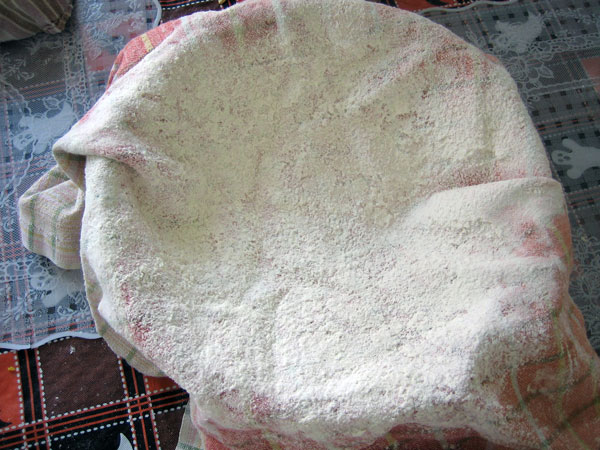
Despite flouring the bowl like crazy, it stuck.
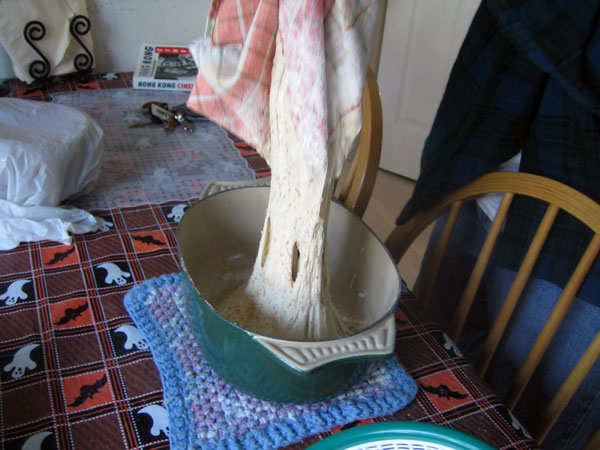
I baked it anyway. It came out ugly, but with pretty nice crumb.
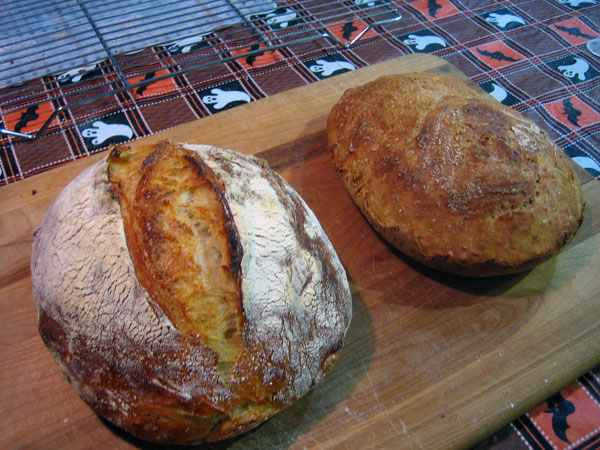
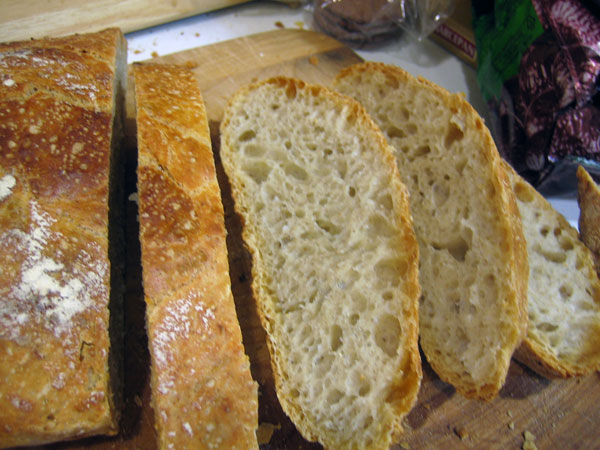
The pretty loaf was a sourdough I baked the same way (in the pot covered for 25 minutes, in the pot uncovered for about 20 or so at 450). It was a damp dough, but not *that* wet. More like 65-70% hydration. Much easier to handle.
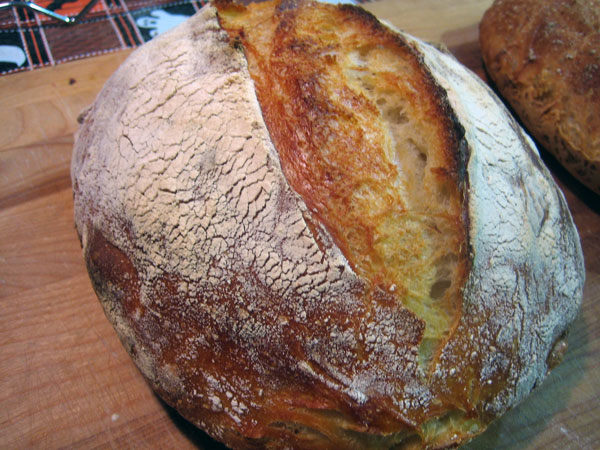
I may try it again, but I'm not overwhelmed by the results. They are good and it is a little simpler, technique-wise, but I enjoy a more traditional approach too.


Comments
Interesting - people seem to be getting wildly different results using this techniqe. I tried it yesterday/today using a cast-iron dutch oven (from our camping stuff) and ended up with a very nice boule. Good oven spring, good crumb, excellent crust, very good flavour. I did have trouble shaping the ball, so I put it in my banneton to rise. It stuck a bit coming out but no disaster, and the banneton rings were clearly visible on the finished product.
One thing is that there are some substantial differences between the recipe as described in the video and the printed one at the end of the NYT article. I followed the printed recipe[1] - what is everyone else using? Also, I did add 1 tbs organic rye flour as I do to most long preferments.
Funny that I never thought of using the dutch oven rather than a La Cloche. Might save me buying the latter!
sPh
[1] I did add 1 tbs organic rye flour as I do to most long preferments.
is that like adding Vital Gluten?
Re: adding a small quantity of rye flour to white flour preferments
> is that like adding Vital Gluten?
I don't know if anyone knows what the exact mechanism is. I found almost by accident that a small quantity of rye flour added to a preferment results in a better-tasting bread. I later read that this is fairly well-known among bakers, particularly in France.
My thinking is that the wild yeast on the rye flour accelerate the yeast-bacteria relationship in the preferment. But my reading so far indicates that no one has a final answer as to why this work.
sPh
Thanks SP, I'll give it a try next weekend. The taste test will be interesting.
is very appealing visually!! Beautiful loaf. You say you were not overwhelmed by results, they are good and simpler..is taste lacking? The "Recipe" loaf looks rather boring..but I must say, if it intrigues people to start baking, flabby , boring white bread may meet its demise!
I guess the raving in the article had me expecting the crust to be out of this world. It had a decent crust and nice crumb, but there was nothing extraordinary about it. And I'm not sure I'd go along with the "this is so easy a 4 year old can do it" bit. Wet dough is a *pain* to handle. Even just folding dough that wet is tough.
It would be interesting to see someone who hasn't baked much before try this technique. I wasn't overwhelmed, but I've been baking almost every weekend for 2 years straight. It certainly took me a while before I baking anything that was as good as this. Perhaps it is a good technique to skip a lot of the trial and error.
I've made the bread twice, using roughly measured cups of flour (stick the cup in the flour bag, shake it level and throw it in the bowl) and the bread has worked beautifully both times. When first mixed, the dough is not slack at all, almost looks like one of those biscuit type doughs where one is admonished to not over mix. I would guess that those who are getting batter like results at first are adding too much water. After 18 hours it becomes quite slack but still holds together when I dump/scrape it out on the surface to to fold. Once folded and shaped I have found it useful to let let it rise on a plate/platter (on a well floured dish towel) that has raised edges that contains the edges of the dough a little, encouraging vertical rise. Obviosly one that mimics the shape of the baking vessel. Since I'm baking an oval loaf I'm using an oval serving platter for the final rise. It also facilitates the final plop into the superheated baking vessel as you can hold the edges of the dishtowel and the platter together and simply tip the dough in.
Total labor: 3 minutes, 10 minutes if you include clean up.
One of the joys of this bread is listening to the crust crackling about 5 minutes after it comes out of the oven as it cools and shrinks. You look at the bottom of the loaf and see a fine network cracks in the crust.
I have been very pleased with the results, it tastes, looks, feels like a good basic bread store french boule. You know, the kind that seduces you with it's delicate, brittle crust, its creamy just soft enough interior, a delicate salty sweet flavor with sublte hints of hidden complexity. A classic that doesn't embark on a hostile takeover over of your taste buds but cries out for good butter, some left over sauce on the plate for mopping and promises of great toast in the morning.
This is definitely a case of less is more.